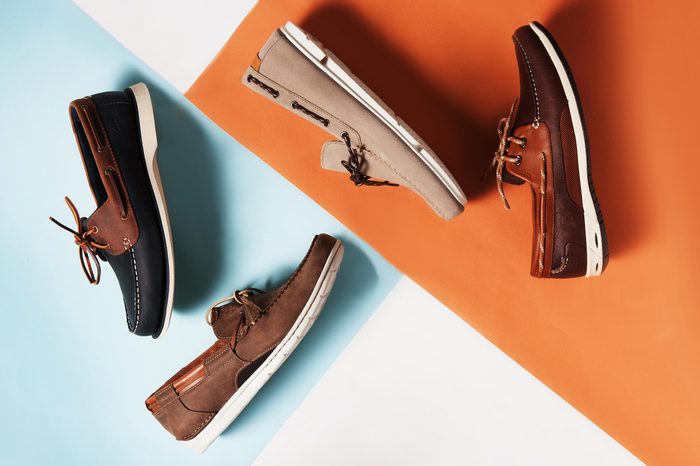
Put your best foot forward
There are all sorts of things you shouldn’t be doing while driving. But when talking about the dangers of eating, wearing headphones, or doing makeup in your car, it can be easy to forget what a crucial role your feet play in operating a car. According to Laura Adams, a safety and education analyst at Driver’sEd.com, “an often-overlooked safety preparation that drivers can take to reduce the chances of getting into a deadly car crash is simple: Wear the right shoes.” And to do that, you need to know what the wrong shoes are. These are types of shoes you should avoid wearing while driving.
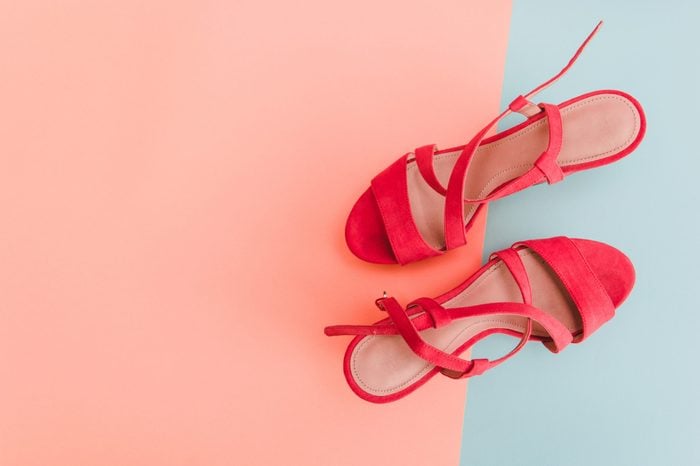
Sandals/mules
Flip-flops hit several different hazardous marks when it comes to driving. Most importantly, flip-flops, more than any other shoe, have the potential to just come right off. “The concern with [these types] of footwear is the chance of the sole getting caught or stuck under the pedal or even sliding off the person’s foot while driving,” explains Ronit Tehrani, one of the owners of the Pennsylvania driving school and license testing company Driven2Drive. “[This] is highly unsafe and dangerous, especially if…one needs to apply either the brakes or gas pedal at a moment’s notice.” Flip-flops also completely lack any ankle support. And it’s not just flip-flops; you should probably avoid driving while wearing any type of sandals or shoes with no back. Flip-flops might be the most likely to fully come off, but the less secure fronts of any type of sandal have the potential to get stuck under a pedal.
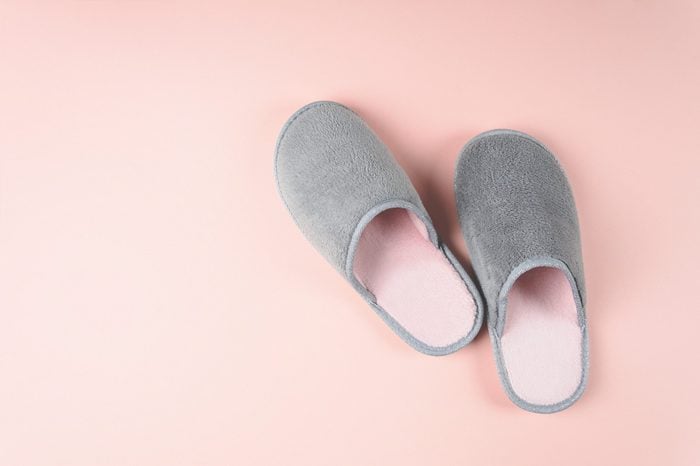
Slippers
If you’re making a nighttime run to the store just down the block, and are tempted to just make the drive in your slippers, well, think again. Slippers hold the same potential dangers as sandals: They’re not secured around your ankle and could (as their names suggest) slip right off your feet at any time. In addition to unsafe driving practices, learn more things you should never do to your car.
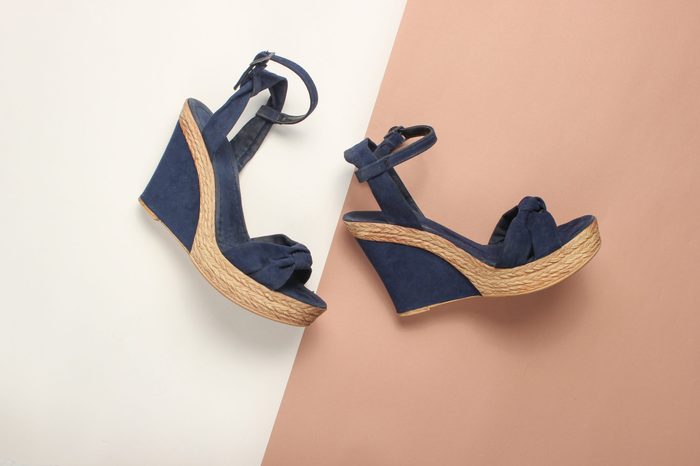
High wedges/platform shoes
While shoes with tiny, thin heels present problems, so, too, do particularly large, chunky shoes. Thin shoe soles keep your feet as close to the pedals as possible, making them better suited to helping your feet gauge the proper amount of force needed to work the pedals. Therefore, driving with very thick-soled shoes, like wedges, platform shoes, or even heavy boots, “could cause you to miss a pedal, press two pedals at the same time, or use the wrong amount of pressure,” Adams says. And, of course, while driving, even making the slightest mistake can have catastrophic consequences under the right conditions. Regardless of what shoes you’re wearing, you should know how to deal with these 10 scary driving scenarios.
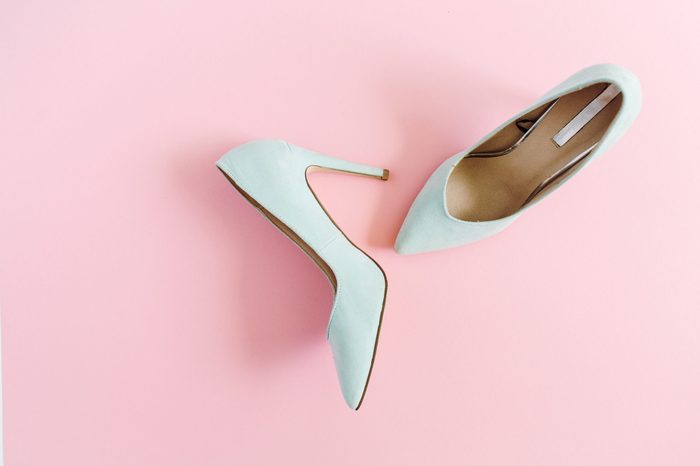
High heels
Considering how cumbersome high heels are to walk in, it shouldn’t come as a surprise that they’re not ideal driving shoes. “To maintain control of pedals, the heel of your foot must rest on the floor of your vehicle,” Adams says. When you’re wearing thin heels, your heel instead hovers over the floor of your vehicle, only making contact with the floor at a point with a tiny surface area. There are a few other drawbacks as well, including heels positioning your feet in an uncomfortable, unfamiliar position than what you’re used to and skinny heels’ potential to snag on your car’s floor mat. In addition, if the shoes have pointy toes, as many high heels do, “the shape and front of the shoe can make it difficult to apply the necessary pressure needed due to the limited surface area of the shoe,” explains Tehrani.
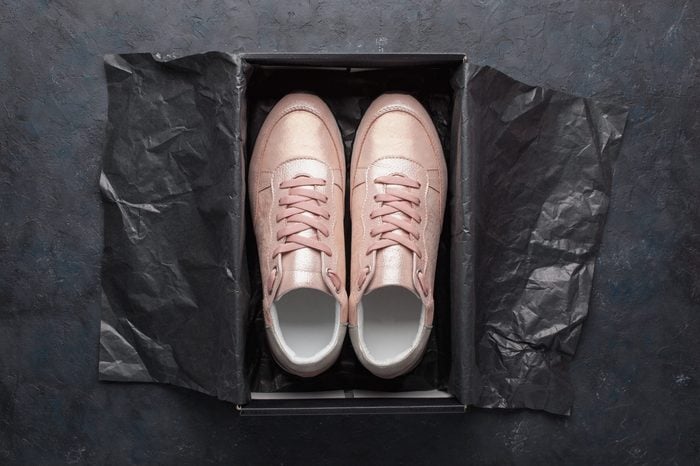
Brand-new shoes
Here’s one that might be a little more surprising. To prevent nasty surprises while driving, you should make sure you know exactly how any shoes you wear feel on your feet before driving in them. Only when shoes are fully broken in should you trust them enough to drive in. What’s more, “certain types of new shoes may have a slippery sole until they’re worn in,” Adams warns. The last thing you want is for your shoe to slip off the pedal while you’re driving.
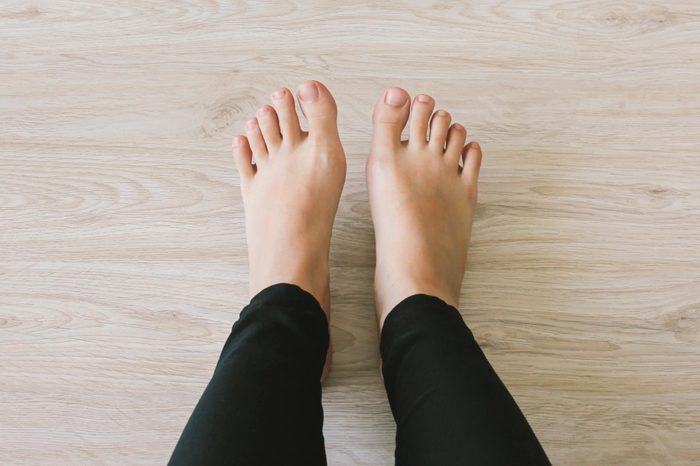
No shoes
You probably know that driving barefoot isn’t the safest choice. When you’re used to driving in shoes, driving without them can feel foreign, and that’s not what you want when operating a motor vehicle. “It requires you to put more pressure on the pedals than you usually do when wearing shoes,” Adams sums up. “That could affect your braking time, putting you at risk.” But Tehrani acknowledges that barefoot driving is actually a preferable option to driving with some of these other dangerous shoe options, especially if said shoes are particularly uncomfortable. Driving barefoot at least “allows one to have more control of the pedals and a direct feel for any deviations while applying pressure to the brake or gas pedal,” she explains. However, its other drawbacks make it risky enough that you should avoid it.
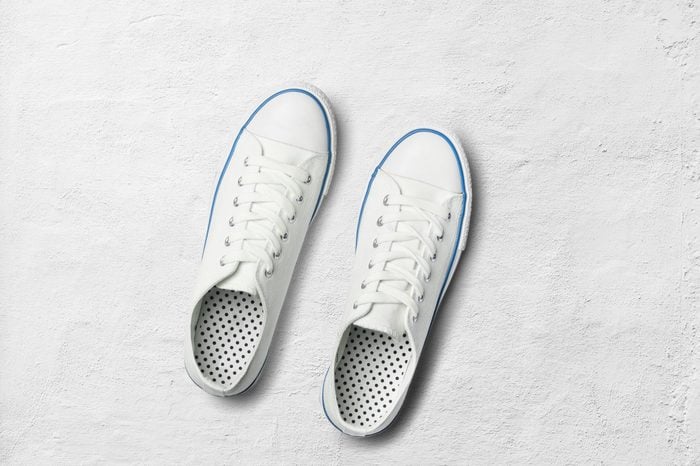
So what should you wear?
There are a few things you want to have in any shoe that you wear while driving. You want your foot to be fully enclosed and secure in the shoe, and your heel should be firmly touching the ground to provide enough “leverage and pressure,” per Adams. “That’s the main problem with many of the other shoes,” she explains. “They don’t allow your heel to make good contact with the floor of the car.” You also want good ankle support and relatively thin soles, factors that “[ensure] that you can apply the right amount of pressure on pedals,” says Adams. A wide toe box also provides safer pedal operation than a narrow one. Some good options for driving shoes are sneakers, (comfortable) flats, and loafers; some shoes like these are even specifically designed for driving.
Driving somewhere where wearing shoes like that is just not an option? Both Adams and Tehrani advise that a pair of comfortable, vehicle-friendly shoes is one of the things you should always keep in your car because then you’ll always have a backup if you’re wearing shoes that are less ideal for driving. Before you get in the driver’s seat, swap out your footwear so that you’re good to go. Make sure you stick your discarded shoes in the backseat or trunk, though; don’t leave them under your own seat to potentially get wedged under a pedal.
Every product is independently selected by our editors. If you buy something through our links, we may earn an affiliate commission.
